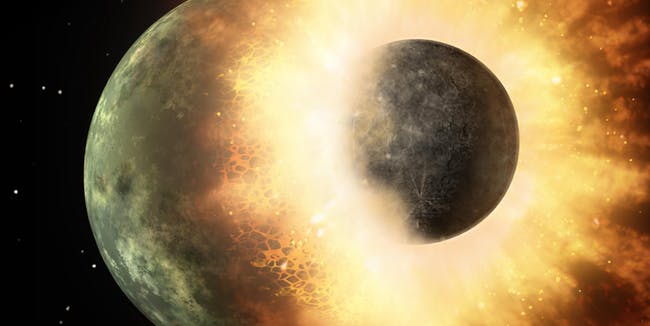
Phosphorus, denoted by the symbol P in the periodic table, is the 11th most common element on Earth. It is fundamental to all living things, being essential for the creation of DNA, cell membranes, and for bone and teeth formation in humans. According to a new study by astronomers at Cardiff University, there seems to be far less of this precious element lurking in the rest of the universe than we used to think. If extraterrestrial life is similar to that on Earth, then the odds of it existing have just depreciated considerably.
P is for life
Phosphorus is one of just six chemical elements that are thought to be indispensable to the functioning of Earth organisms. Phosphorus cannot be manufactured or destroyed, and there is no substitute or synthetic version of it available. Astronomers claim that phosphorus in created in supernovae, which are massive explosions of dying stars. Dr. Jane Greaves of Cardiff University observed that the observed amounts of phosphorus in the universe don’t match the computer models, and naturally wondered what this implies for life on other planets given the unpredictable nature of phosphorus production.
Using the William Herschel Telescope, sited on La Palma in the Canary islands, Greaves and colleagues probed the famous Crab Nebula in infrared for signs of phosphorus and iron. The first element supports life, while the second is a major part of our planet’s core. The Crab Nebula is a supernova remnant around 6500 light years away in the direction of the constellation of Taurus.
This was only the second study of phosphorus from supernovae ever made. The first such study looked at the Cassiopeia A (Cas A) supernova remnant. By comparing phosphorus content from both supernovae, the researchers concluded that there seems to be far less phosphorus in the Crab Nebula than in Cas A. The latter is the explosion of a rare type of supermassive star, which might explain the discrepancy in phosphorus content.
More observations by different telescopes could reveal more insight and complete some of the missing pieces of the puzzle. For instance, it could be that there are some phosphorus-rich regions in the Crab Nebula that astronomers have overlooked. But, so far, these preliminary results suggest that the amount of phosphorus blown into space can vary wildly. In the future, the researchers plan on studying more supernovae to establish how common it is to find supernova remnants that lack phosphorus.
“The route to carrying phosphorus into new-born planets looks rather precarious. We already think that only a few phosphorus-bearing minerals that came to the Earth—probably in meteorites—were reactive enough to get involved in making proto-biomolecules,” Greaves said in a statement.
‘If phosphorus is sourced from supernovae, and then travels across space in meteoritic rocks, I’m wondering if a young planet could find itself lacking in reactive phosphorus because of where it was born? That is, it started off near the wrong kind of supernova? In that case, life might really struggle to get started out of phosphorus-poor chemistry, on another world otherwise similar to our own.
The findings were presented this week at the European Week of Astronomy and Space Science in Liverpool.






